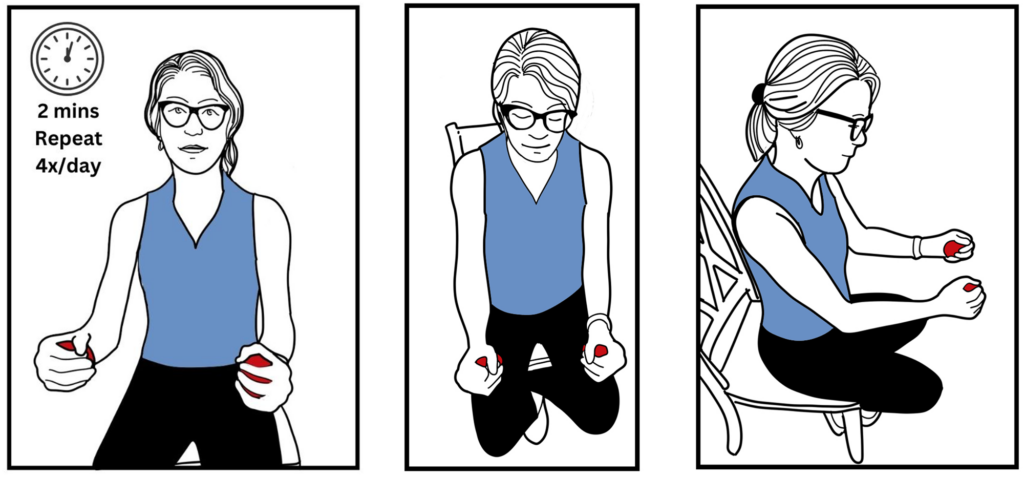High blood pressure is a public health crisis that causes more than 10 million deaths annually. Standard medical treatment for hypertension is pharmacological intervention (for people with systolic pressure greater than 140 mmHg) and/or lifestyle modification. Unfortunately, despite having spent more than 70 years perfecting medications to lower blood pressure, nearly 50% of individuals receiving pharmacological treatment are unable to meet their guideline driven goals. Even worse, 50% of hypertensives receive no treatment at all. Ineffective or lack of treatment is a big deal because the risk of a cardiovascular event increases in a linear manner with systolic pressure: every 20 mm increase in systolic pressure over 115 doubles the risk of an event. In other words, someone with a systolic blood pressure of 135 mmHg is twice as likely to have a stroke as an individual with a systolic pressure of 115. Alarmingly, hypertension is present in more than 65% of the American population over the age of 60 and its prevalence is increasing annually.
I previously published a paper called “Novel Exercises and Stretches for Managing High Blood Pressure” that showed diaphragm exercises, holding prolonged static stretches, and performing a few minutes of isometric contractions a few times a week could lower systolic and diastolic blood pressures by 10.4 mmHg and 6.7 mmHg, respectively. More recently, Edwards et al. (1) analyzed 270 randomized controlled trials that included nearly 16,000 participants to evaluate the effect different types of exercise had on high blood pressure. The authors analyzed the effect that aerobic exercise, dynamic resistance training, combined training, high-intensity interval training, and isometric exercises each had on hypertension. The end result of this large-scale systematic review was that isometric exercise training protocols were far and away the most effective for reducing both systolic and diastolic blood pressure. The authors state that this research should provide “a comprehensive data-driven framework to support the development of new exercise guideline recommendations for the prevention and treatment of arterial hypertension.” My favorite exercise for lowering blood pressure is illustrated in figure 1.

In November 2023 researchers from Spain decided to investigate nutritional factors associated with hypertension (2). These researchers measured tomato consumption and followed more than 7000 high-risk participants in a 3-year longitudinal study to evaluate whether or not tomato consumption had any effect on hypertension. Tomatoes were evaluated because they are high in calcium, magnesium, phosphorus, zinc, manganese, pantothenic acid, niacin, and phenolic compounds. Tomatoes are also the highest source of lycopene, which is a powerful antioxidant with 10 times greater antioxidant capabilities than vitamin E. At the end of the study, the authors determined that consuming 110 g of tomatoes per day, the equivalent of one large tomato, resulted in a 36% reduction in the risk of hypertension. The authors relate this significant drop in hypertension to the fact that lycopene inhibits the angiotensin-converting enzyme thus blocking the production of angiotensin II, a vasoconstrictor that increases blood pressure. Lycopene also indirectly increases nitric oxide generation in our blood vessels, and nitric oxide is a powerful vasodilator that can lower blood pressure. Nitric oxide is also found in high amounts in beets, so consuming tomatoes and beets could be a one-two punch that leads to significant reductions in both systolic and diastolic blood pressures. This is especially true if done in conjunction with a regular exercise routine involving isometric contractions.

References:
- Edwards JJ, Deenmamode AH, et al. Exercise training and resting blood pressure: a large-scale pairwise and network meta-analysis of randomised controlled trials. British Journal of Sports Medicine. 2023 Oct 1;57(20):1317-26.
- Murcia-Lesmes D, et al. Association between tomato consumption and blood pressure in an older population at high cardiovascular risk: observational analysis of PREDIMED trial. European Journal of Preventive Cardiology. 2023 Nov 24:zwad363.
